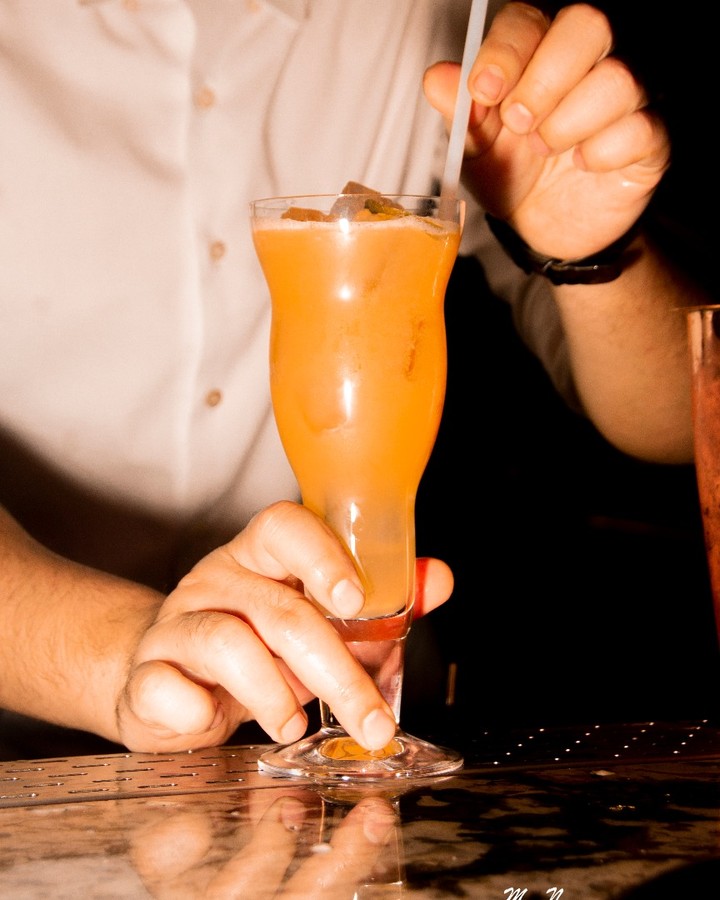Table of Contents
Achieving professional-level food photography involves a delicate blend of technical skills and artistic expertise. This discipline requires mastery in lighting, composition, food styling, and post-processing, but it goes beyond technicalities. In this beginner’s guide, we’ll walk you through the fundamental concepts that will kick-start your journey into the art of food photography.

Understanding Your Camera For Food Photography
Food photography can be as simple as using your smartphone or as advanced as using a DSLR camera. The first step is to understand your camera’s settings and capabilities.
1. Camera Choice
For beginners, using a smartphone with a good-quality camera is perfectly acceptable. It’s convenient and provides excellent results. However, if you’re serious about food photography, consider investing in a DSLR camera. It offers more control and versatility.

When you consider using a DSLR camera for food photography, you unlock a range of advantages that significantly elevate the quality and creative potential of your food images when compared to other camera types. To start, DSLRs are known for their superior image quality. Thanks to their larger sensors and the ability to interchange lenses, you can capture exceptionally sharp, detailed, and high-resolution images. This level of quality enables you to faithfully represent the intricate textures and vibrant colors of the dishes you’re photographing.
One of the standout benefits of DSLRs is the enhanced control they offer. These cameras provide manual settings for exposure, aperture, shutter speed, and ISO, allowing you to make precise adjustments tailored to your specific vision. In food photography, where precise control of lighting and depth of field is crucial, this feature is invaluable for highlighting the fine details and aesthetic qualities of the cuisine.
2. Camera Settings For Food Photography
When mastering the exposure triangle in regards to food photography, you will find it essential to adjust settings such as aperture, shutter speed, and ISO. Each of these elements plays an important role in your photographic process, and understanding how to control them is the foundation of capturing well-exposed and visually compelling photos.
Aperture for Food Photography: Learning to control aperture is a game-changer in food photography. By widening the aperture (using a low f-number), you can create a beautifully blurred background, emphasizing the dish while making the surroundings pleasantly soft and out of focus. This technique is particularly useful when you want to draw attention to the food’s texture or a specific element. Alternatively, with a smaller aperture (high f-number), you can keep more of the scene in focus, ideal for showcasing intricate details or capturing the entire setting of a table or kitchen.

Shutter Speed For Food Photography: Understanding shutter speed is vital for capturing culinary moments. When working with food, whether it’s capturing steam rising from a freshly cooked dish or pouring a sauce, you need the control to freeze the action or create a sense of motion. Fast shutter speeds will freeze any movement, allowing for sharp, dynamic shots. On the other hand, slower shutter speeds can convey a sense of flow or motion, which can add an artistic touch to your food photography.

ISO For Food Photography: Food photography often involves working in diverse lighting conditions, from natural daylight to artificial and dim settings. Here’s where mastering ISO comes into play. By adjusting your camera’s sensitivity to light, you can ensure well-exposed images, even in low-light scenarios. While higher ISO values can introduce noise, understanding the balance between ISO and other settings allows you to capture appetizing shots, even when working under less-than-ideal lighting.

3. The Tripod Advantage
Stability for Sharper Images: When you employ a tripod in food photography, you gain a crucial advantage—stability. The tripod provides a steady platform for your camera, eliminating hand tremors that cause blurry images, especially in low light. In food photography, where detail and texture matter, this stability is essential. Each shot is sharp and clear, enhancing overall image quality.
Precise Framing and Composition: A tripod enables precise framing and consistent composition. It holds your camera steady for well-thought-out compositions with aligned elements, creating visually appealing images.
Longer Exposures and Creative Control: The tripod’s stability is vital for longer exposures, yielding striking and creative shots.
Flexibility with Lighting Setup: It serves as a secure platform for lighting equipment, allowing precise control over light and shadow. In summary, a tripod enhances image quality, precise framing, creativity, and lighting control, contributing to high-quality and visually captivating food photographs.
Composition In Food Photography

Composition is a vital aspect of photography that greatly impacts the visual appeal of your food photos.
1. The Rule of Thirds
Imagine dividing your image into a tic-tac-toe grid. Place the main subject (your dish) along the gridlines or at the intersection points. This simple rule can make your photos more balanced and engaging.
2. Framing and Angles
Experiment with different angles to find the most appealing view of your dish. Consider overhead shots, 45-degree angles, or even capturing the food from the side. Each angle can convey a unique story.
Learn more about composition and framing.
Lighting In Food Photography
Proper lighting is the secret ingredient for mouthwatering food photos.
1. Natural Light vs. Artificial Light
Natural Light: Advantages: Natural light, often obtained from a window, provides a soft, diffused glow that can beautifully accentuate the textures and colors of your food. It’s inherently flattering and can create an inviting ambiance. Furthermore, it’s readily available and cost-effective.
Considerations: However, natural light can be inconsistent, varying with the time of day, weather, and location. This can limit your flexibility and requires planning around optimal lighting conditions. Additionally, you might need to use modifiers like diffusers and reflectors to control the light precisely.

Artificial Lighting (Softboxes or Diffusers): Advantages: Artificial lighting, such as softboxes or diffusers, offers consistent and controlled illumination. You have the flexibility to create the desired lighting conditions at any time, regardless of the external environment. It’s ideal for intricate setups and commercial food photography, allowing for precise control over shadows and highlights.
Considerations: Artificial lighting may require an initial investment in equipment. It demands expertise in adjusting the lighting to achieve the desired effects. It can sometimes lack the natural warmth and ambiance of window light.
Experimentation: To determine the most suitable approach, it’s valuable to experiment with both natural and artificial lighting. Try shooting the same dish with both sources under various conditions. Observe the results and evaluate which lighting source complements the specific characteristics of your food. For instance, natural light might be ideal for highlighting the freshness of salads, while artificial lighting can create a luxurious ambiance for rich, dark dishes.
2. Controlling Shadows and Highlights In Food Photography
Adjust the angle and intensity of your light source to control the shadows and highlights on your dish. Soft, diffused light is often preferred as it minimizes harsh shadows.

In this photo, I opted for an aperture of 1.8. This wide aperture beautifully highlighted the dish’s intricate texture, delicately blurring the background to accentuate the vibrant berries. The resulting image was a captivating composition, drawing the viewer’s gaze to the rich details of the meal against a dreamy, soft backdrop. Despite the challenge of achieving precise focus at f/1.8, this experience emphasized the artistic impact of aperture settings, inspiring me to explore the nuanced storytelling capabilities of different apertures in my ongoing culinary photography endeavors.
Techniques for Controlling Shadows and Highlights:
- Angle of Light: The angle from which your light source strikes the subject significantly influences the shadows and highlights. When the light source is positioned at a 90-degree angle to the subject (side lighting), it creates pronounced shadows and highlights, which can accentuate textures and depth. On the other hand, when the light source is positioned at a shallower angle or even directly above (top lighting), shadows become minimal, resulting in a flatter appearance. The choice of angle should align with your creative intent and the specific characteristics of the dish.
- Intensity of Light: The intensity of your light source, often controlled by the distance from the subject and the power settings, affects shadow and highlight contrast. Closer, more intense light produces crisper shadows and highlights, while a greater distance or lower power softens the transitions between light and shadow. To control these aspects, you can use modifiers like diffusers, reflectors, and screens to manipulate the light’s strength.
Learn more about food photography techniques
The Role of Soft, Diffused Light:
Soft, diffused light is often favored in food photography for its ability to minimize harsh shadows. It provides gentle, even illumination that softens the transitions between light and shadow, highlighting the textures and colors of the food without distracting harsh contrasts. Achieving soft, diffused light can be done by placing a diffusion panel or shooting through a sheer fabric between the light source and the subject. This technique is particularly valuable when photographing reflective or glossy surfaces like sauces, glazes, or liquids, as it helps maintain their sheen and texture without harsh reflections.
Gear Up

While you don’t need an extensive collection of equipment, a few essentials can significantly enhance your food photography.
1. Lenses and Accessories
Invest in a good lens for your DSLR camera, like a prime lens with a wide aperture. Accessories like lens hoods and filters can also improve your shots.
2. Backdrops and Surfaces
Experiment with different backdrops to complement your food. Options like wood, marble, or simple fabrics can add texture and depth to your images.
Editing for Perfection
Post-processing plays a crucial role in enhancing your food photos.
1. Photo Editing Software
Popular software like Adobe Lightroom and Photoshop provide powerful editing capabilities. Learn to use these tools to correct colors, contrast, and exposure.
2. Retouching and Refining
Remove imperfections, such as blemishes or unwanted crumbs, from your photos. Retouching can make your dishes look even more inviting.
Learn more about food photography for print media
Practice Makes Perfect

Remember, practice is key to becoming a great food photographer. Experiment with different settings, angles, and lighting conditions. Don’t be afraid to make mistakes – they are valuable learning experiences.
This beginner’s guide provides you with a solid foundation to start your food photography journey. As you continue to explore and practice, you’ll develop your unique style and create images that truly tantalize the senses.
View our services and contact us Either on Instagram for your photography services.
Now go pick your camera and hit that Shutter Button!!!

